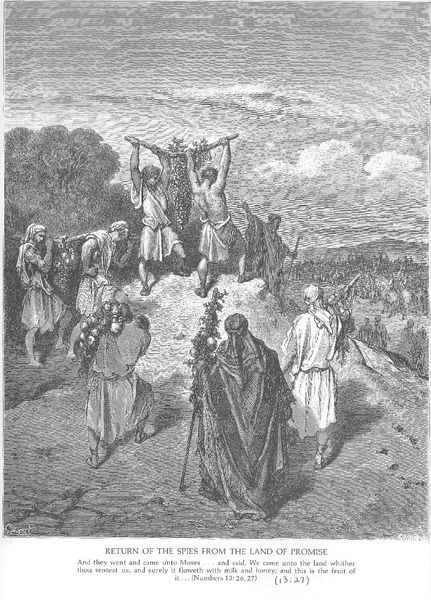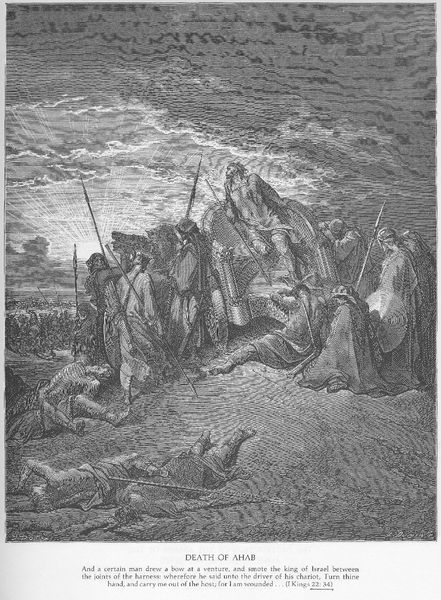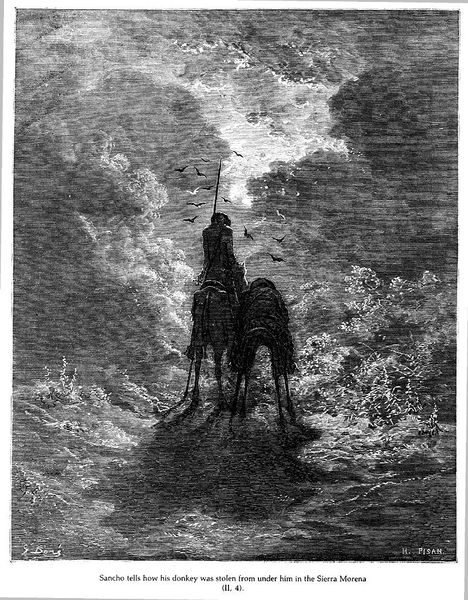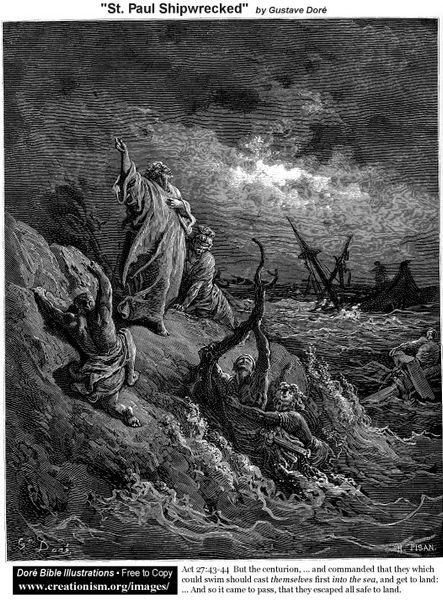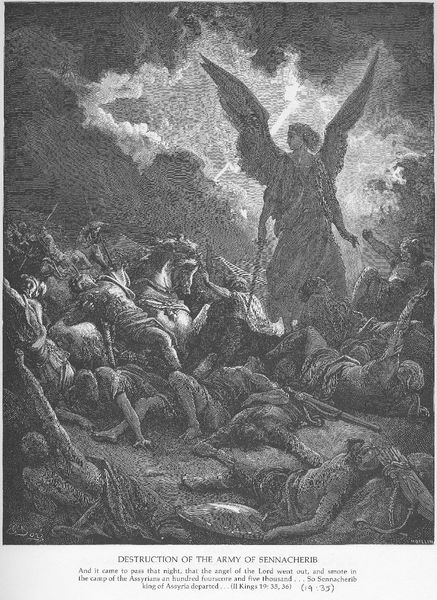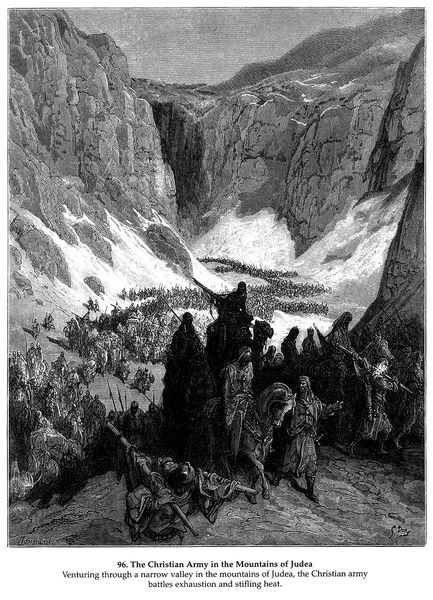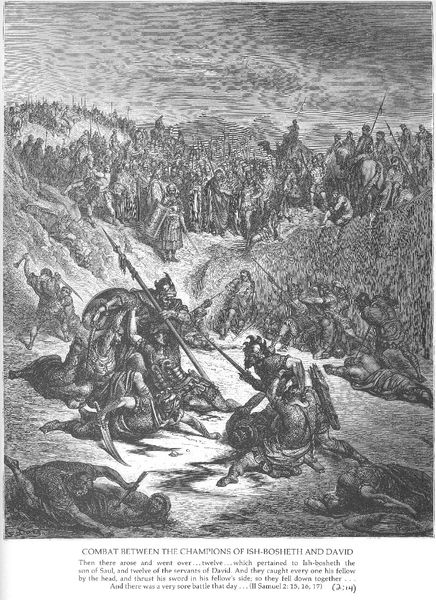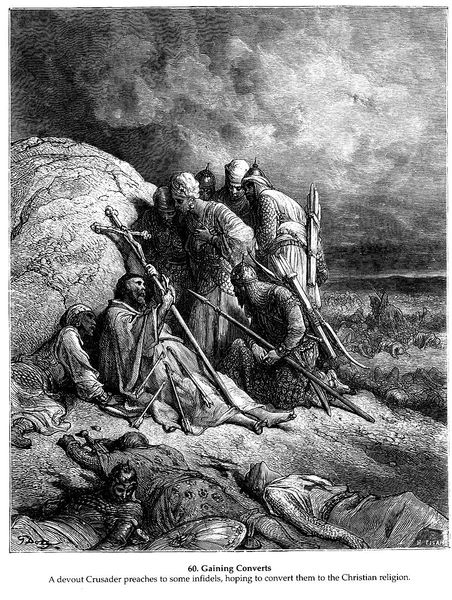
drawing, print, photography, engraving
#
portrait
#
drawing
#
narrative-art
# print
#
landscape
#
figuration
#
photography
#
romanticism
#
repetition of black colour
#
carved
#
christianity
#
water
#
line
#
history-painting
#
engraving
#
realism
Copyright: Public domain
Editor: This is "Jacob Prays for Protection" by Gustave Dore. It seems to be an engraving, likely from the mid-19th century. The stark contrasts create a rather dramatic scene, and Jacob, standing in the river, is a striking figure. What do you see in this piece in terms of its historical context and visual politics? Curator: The drama you've noted speaks to its time. Dore's works were widely disseminated through illustrated Bibles, which significantly impacted how people visualized biblical stories. Engravings democratized art, making these scenes accessible beyond the church or wealthy patrons. Notice how Dore uses landscape to frame the figure of Jacob. Editor: Yes, he seems so small against the grand landscape and large entourage. Does the setting influence the narrative’s power? Curator: Absolutely. The landscape is not merely a backdrop but a character in itself. Dore’s focus was not necessarily historical accuracy. He uses landscape to amplify the emotional intensity and suggest Jacob's isolation and vulnerability before God. Consider how the composition positions Jacob between his worldly possessions represented by the people and camels, and a plea to a higher power. It mirrors the Romantic era's fascination with the sublime and humanity's relationship with nature. Think of how the engravings like this shaped how individuals, particularly the burgeoning middle class, understood faith and the bible in that period. Does this democratization have other consequences? Editor: It gives visual authority, impacting collective memory of bible stories. But I see it moves beyond a religious context to something much more widely political in this period of enormous social change. Curator: Exactly. Dore's imagery participates in broader cultural and social dialogues. By considering the modes of its production, dissemination, and reception, we can understand the social implications of seemingly religious art. I appreciate how you connected it to political change beyond religious interpretations, reflecting upon collective visual culture! Editor: Thanks for the context. It really reshapes how I view not only Dore's artistic intention, but its effect on audiences.
Comments
No comments
Be the first to comment and join the conversation on the ultimate creative platform.
